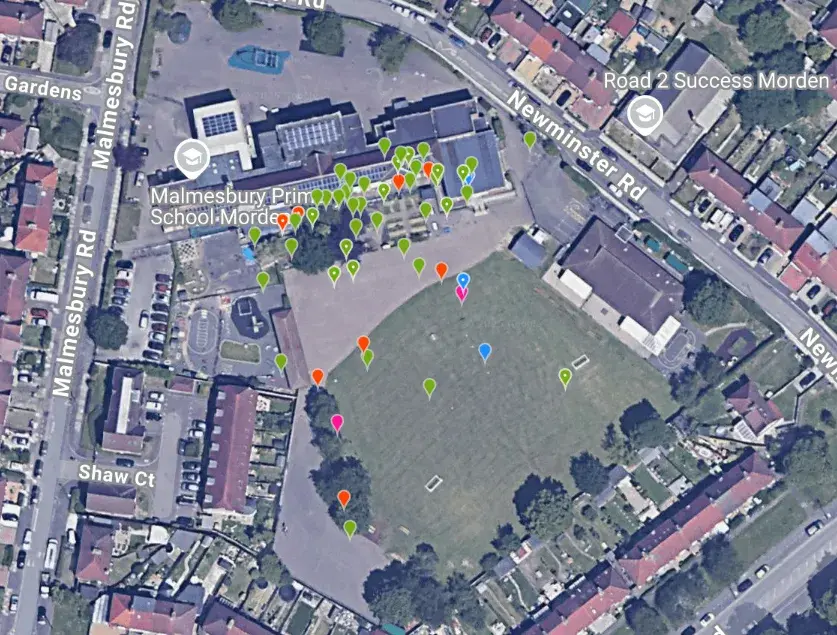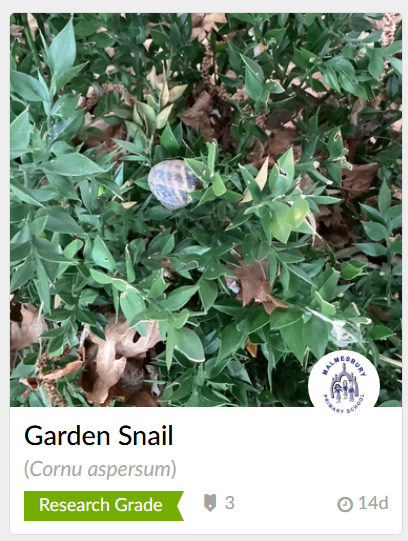Nature Park schools contribute to millions of wildlife observations with the global City Nature Challenge

This year's City Nature Challenge saw more than three million observations of over 70 thousand species logged across the world. We took a visit to Malmesbury Primary School, a Nature Park school in Morden who took part and contributed to this global event!
City Nature Challenge is an annual four-day community science event where people across the globe photograph wildlife and share their observations using a free app called iNaturalist. It’s a collaboration-meets-friendly-competition to see what can be accomplished when we all work towards a common goal.
We incorporate this event into the National Education Nature Park – it’s an easy way for you to kickstart your wildlife observations, adding sightings to the Nature Park Wildlife Observations Map to show what’s living on your site. Understanding what’s living there now enables you to understand how your site currently supports wildlife and provides a baseline that you can compare to in future once you’ve made some changes to boost biodiversity.
Malmesbury Primary School in Morden are a Nature Park school who got involved in the City Nature Challenge this year. Malmesbury first signed up to the National Education Nature Park in spring 2024. After completing their habitat map, they decided to dig a little bit deeper and explore what biodiversity they have at their school site through participating in the City Nature Challenge. Community Science Officers Nathalie Griffiths and Tom Lawrence joined two Year 4 classes as they used iNaturalist to see what they could find!
Before the City Nature Challenge began, teacher Ms. Dziewguc created a school iNaturalist account, using the instructions on the Nature Park website. For the City Nature Challenge, students used school iPads logged into the Malmesbury iNaturalist account to survey their school site in small groups.
"Taking part in the City Nature Challenge and using the iNaturalist app was a fantastic experience for the children. It gave them the opportunity to become real-life scientists, exploring their local environment and learning how to observe, identify, and record living things in nature. They were so engaged and excited to contribute to a global citizen science project, and it really deepened their understanding of biodiversity and conservation in a hands-on, meaningful way."
Ms. Dziewguc, Year 4 teacher
Over the course of an hour, the pupils made 75 observations on iNaturalist, from earthworms to daisies and dandelions, and even a sawfly larva. After the City Nature Challenge ended, people from around the world, including Natural History Museum researchers and staff, helped identify the different species students had found. Currently, 19 of the observations are certified as research-grade, meaning that enough people agree on the species identification and the observation can be used by scientists for research purposes!

“It was so fun to get outside with the students and discover what biodiversity they could find with them!" says Nathalie Griffiths, Community Science Officer at the Natural History Museum. "The pupils picked up how to use the iNaturalist app really quickly, and loved being able to find out quickly what species of plant or insect they were looking at. At the end of the session, we were able to look at the records the students had created and discuss how they can be used by both Nature Park researchers to understand biodiversity on the educational estate, and by scientists around the world."
“This website is so cool and helps you to learn types of plants. It’s educational, especially for students. I had so much fun using this app. I wish I could rate it 5 stars!"
Abi, Year 4 pupil
The City Nature Challenge may be over for another year, but you can still use iNaturalist to explore and identify the biodiversity you have on your site. Find out how your school can get involved with iNaturalist and check out the Nature Park Wildlife Observations Map!
